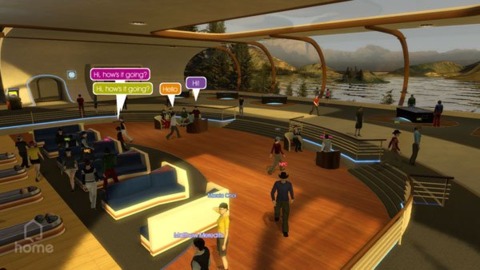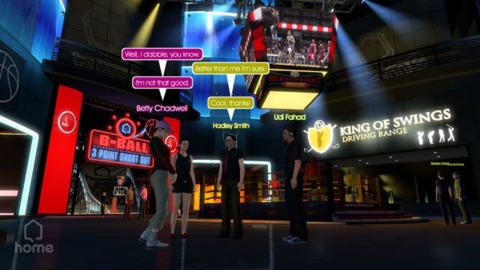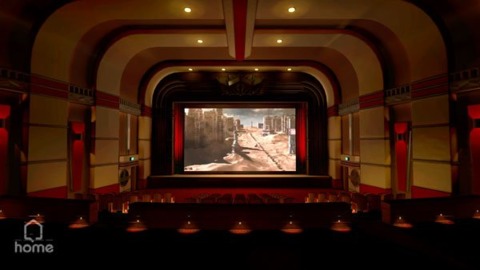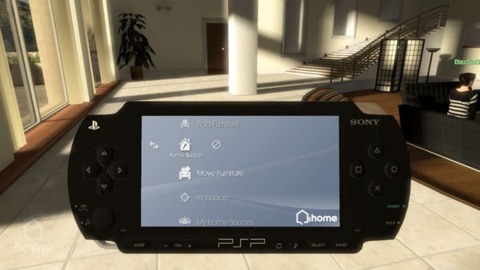GDC 07: PS3 phoning Home this fall
[UPDATE] Sony unveils its upcoming 3D-avatar-based "communication, community, and commerce" online service; video of full Sony keynote inside.
SAN FRANCISCO--Imagine a three-dimensional avatar-based socializing sim like Second Life. Now cross it with the online gaming and matchmaking features of Xbox Live. Leaven with dynamic streaming in-game advertising a la Massive, throw in some Pogo.com-esque casual gaming, and add a dash of Sneak King-like merchandising. Heat, stir, let cool, serve, and--voila--you've got Home, the new online service for the PlayStation 3.
Following a flurry of rumors, Sony officially opened Home's doors at a secretive, invite-only event on Tuesday evening at a nightclub near the base of the Bay Bridge. Following the requisite signing of nondisclosure agreements and plying of attendees with high-end nibbles and libations, Sony Worldwide Studios president Phil Harrison took the stage to give a preview of the keynote speech he would deliver the following morning at the 2007 Game Developers Conference.
Using a PowerPoint-like slide show via the PS3's cross-media bar, Harrison outlined the concept behind Home, which he called "Game 3.0." As the executive himself freely admitted, the concept is a riff on Web 2.0, the term applied to the new, more interactive and customer-focused services and sites like Pandora, YouTube, and Flickr.
All the aforementioned sites embrace the concept of what Harrison calls "emergence entertainment," allowing users to upload their own content. When it launches this fall, Home will offer similar functionality to PlayStation 3 users. However, instead of a stripped-down interface, the service will feature a detailed three-dimensional environment with graphics and physics on par with many next-gen games.
Harrison first showed off Home's slick look by showing "the lobby," one of the public forums where PlayStation 3 users can meet and greet each other. Looking like a sleek building out of pre-Cylon-nuclear-holocaust Battlestar Galactica, the lobby was filled with avatars sporting hip hairdos and euro-chic wardrobes. The avatars can communicate on several levels: simple emotion animations (waving, dancing) like those in World of Warcraft, text chat via keyboard or predictive text, voice chat, and video chat.

Besides the lobby, Home will offer a host of other public spaces with a variety of activities. To demonstrate, Harrison had a coworker jaw with a colleague in Europe, then saunter through a fully rendered entertainment complex with bowling lanes, pool tables, and realistic old-school arcade machines like those in Grand Theft Auto: San Andreas. The machines will offer visitors casual games, with a Choplifter-esque mockup being used for illustration purposes.
Another public space Harrison visited was a movie theater, with posters of and trailers for real-world films. Visitors to the virtual cinema can watch the previews playing on monitors in the lobby or enter actual theaters, potentially to watch full-length films streamed on screens.

Harrison also showed how a Home user could watch video in his virtual abode. Each Home user will receive a basic apartment free of charge and can invite their friends over to their abodes to socialize in a more intimate setting. Harrison said Home apartments can also be used as smaller-scale lobbies for close-knit gaming groups, and even touted them as potential clan headquarters. Users will also be able to host virtual parties in apartments where they can DJ using music files streaming from their PS3 hard drives.

Home apartments can be customized with both abstract patterns and game themes; heart wallpaper and Resistance: Fall of Man-branded posters were offered up to the briefing audience as examples. Said virtual abodes can also be filled with designer furniture that can be moved, thrown, or otherwise dislodged with realistic physics. Users can also put picture frames on the wall, to which they can upload any image from their PS3 hard drive. To show the ease of this process, Harrison snapped a shot of the crowd and uploaded it into a frame on the apartment wall within seconds.

Home users can also deck out their apartment with a variety of electronics--all Sony-branded, of course. Not only will said electronics look like their real-world counterparts, they will also function like them. To illustrate this fact, Harrison selected a 42-inch Bravia LCD TV and hung it on the wall. He then selected the trailer for Casino Royale and began to stream it to the television. As a comic afterthought, the demonstration avatar then threw the television down his apartment's stairs. The set didn't break, but it bounced realistically, and the trailer's video continued to play without any skipping.

Throughout his presentation, Harrison made a point of saying that the Home function would be a free download which would be accessible from the PS3's XMB. However, the executive left no question that Sony has come up with plenty of revenue streams for Home. The most basic of these are things PS3 users will pay for: Harrison said there will be high-end--and possibly branded--items of clothing which users can purchase for their avatars. He also showed a "luxury" apartment which will have several floors and a lakeside view--and heavily hinted it would not be gratis.

But while premium content is a no-brainer, Harrison also showed off other, more ingenious ways Sony will glean coin from Home. First of these is in-game advertising. All public spaces and lobbies in Home will have large, dynamically generated virtual video monitors, banners, and billboards hawking various products.
Harrison also showed off a mockup of a whole constellation of public home areas that can be branded to a third-party publisher--or any other company willing to pay the price. He showed off a concept Home area that resembled a cross between a carnival and the EA Sports booth at the Electronic Entertainment Expo. There, visiting avatars could hit balls at a golf-game-branded driving range, sink three-pointers at hoop stations slathered in basketball game logos, or take out their virtual frustrations on boxing-game-themed foam dummies. Presumably all these features will be made available to publishers--for a price.
Lastly, all Home's menus will be accessed via a virtual PlayStation Portable. The demonstrations Harrison used were very reminiscent of the PDA in Doom 3, with avatars pulling reproductions of the handhelds out of their pockets, sustaining the illusion of a virtual world. However, the population of said realm won't be known until later this year. Currently in a limited closed beta, Home will enter a wider beta in April, with launch set for this fall in the US and Europe.
Got a news tip or want to contact us directly? Email news@gamespot.com
Join the conversation